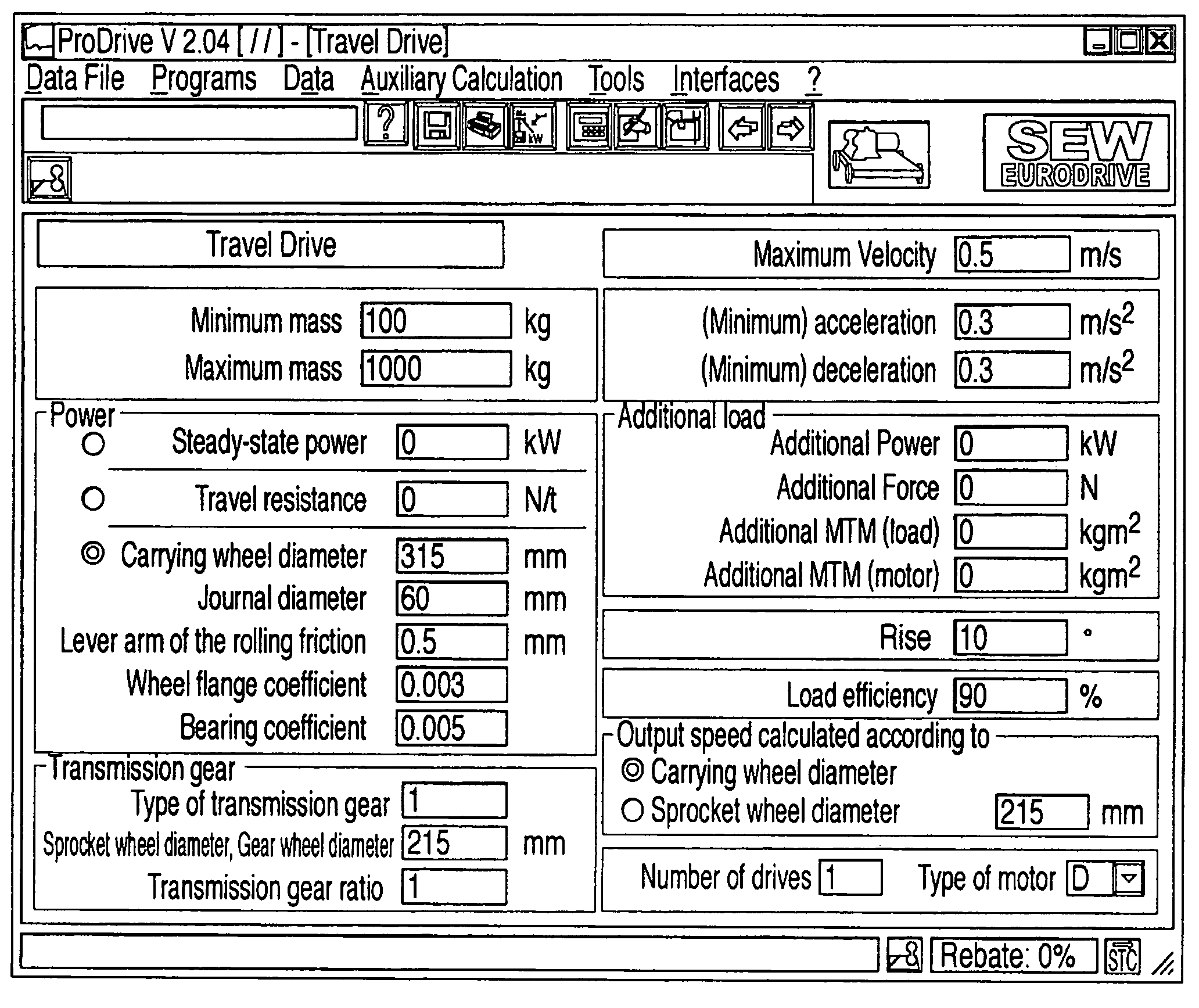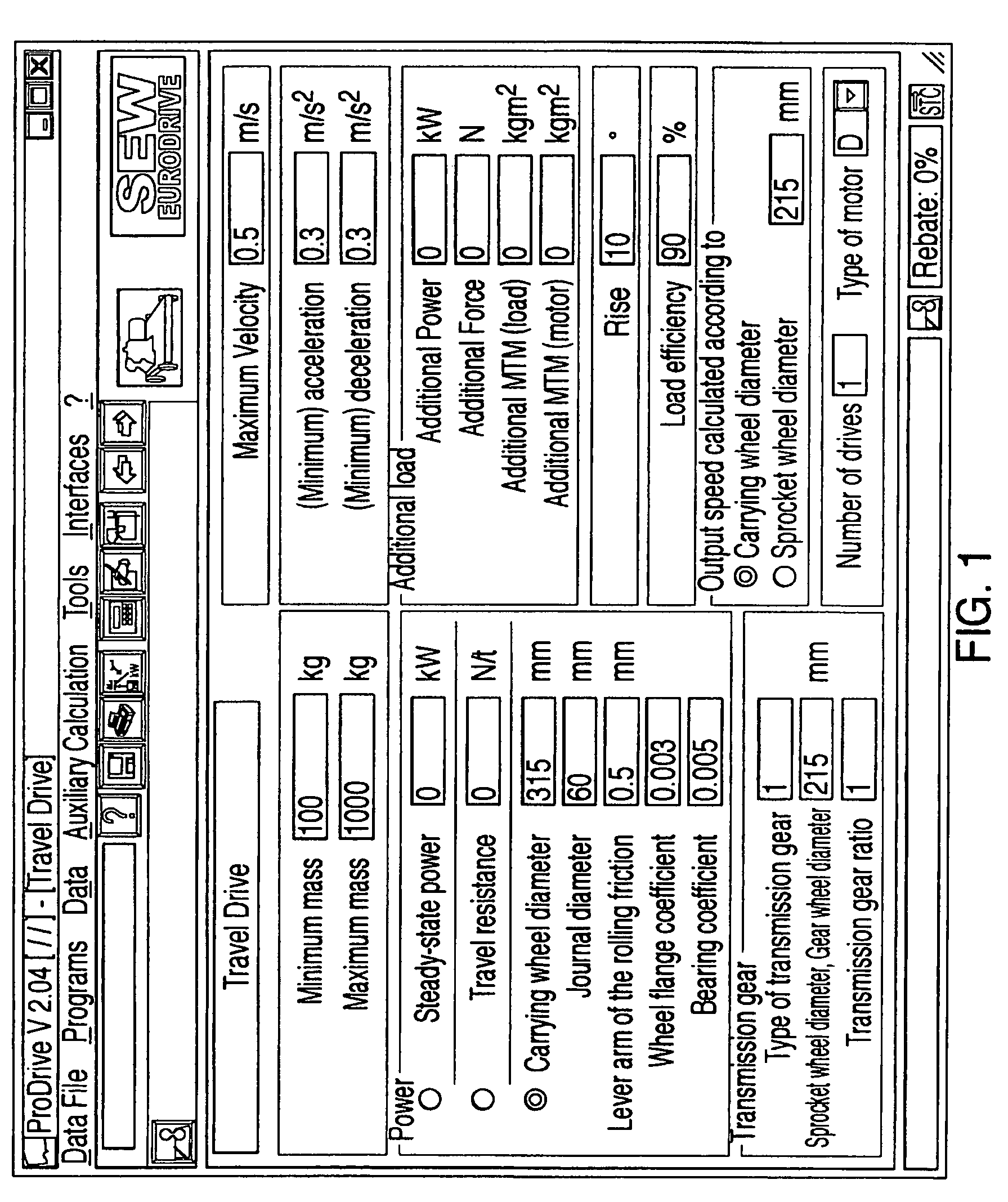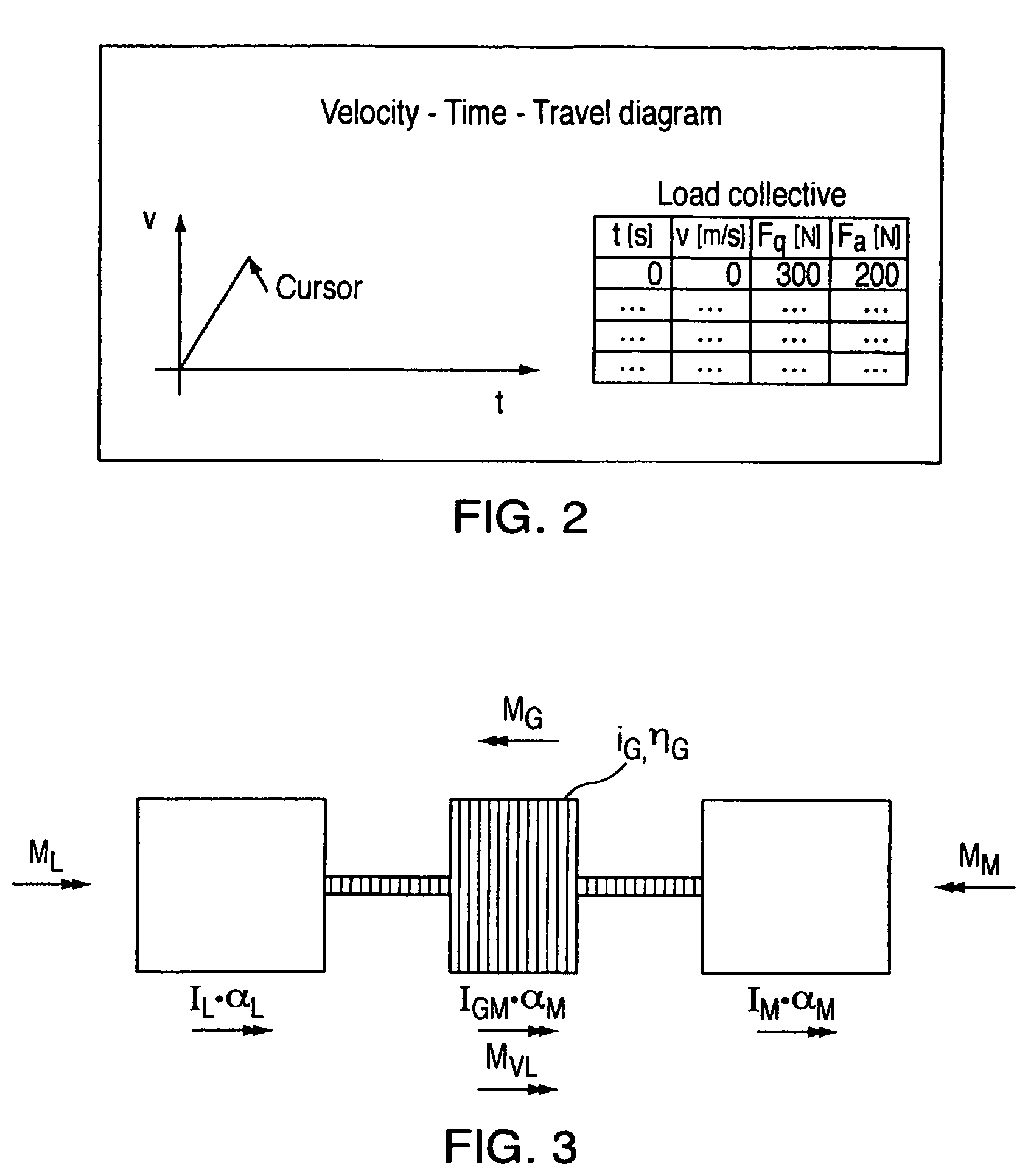Method and assembly for determining and/or producing a drive or parts for a drive and interface and method for determining an operational reliability factor SB
a technology of operational reliability factor and drive, which is applied in the direction of program control, total factory control, structural/machine measurement, etc., can solve the problem that the method may require only a small amount of computing tim
- Summary
- Abstract
- Description
- Claims
- Application Information
AI Technical Summary
Benefits of technology
Problems solved by technology
Method used
Image
Examples
Embodiment Construction
[0042]In an example embodiment of the present invention, the application data of a drive, e.g., of a geared motor, include data concerning the provided masses, velocities, accelerations, decelerations, forces, torques, powers, geometric data, frictional forces, etc. Also belonging to the application data in the case of special applications is information concerning the service life, ambient temperature and / or operating temperature. Desired information concerning the reliability, such as minimum and / or maximum reliability factor, may also be input.
[0043]In an exemplary embodiment of a method and / or a system according to the present invention, a travel diagram and / or application data are first input without information concerning the type of installation or machine.
[0044]In an example embodiment, the type of installation or machine is selected first.
[0045]The typical application data relevant in each instance for this installation or machine may thereupon be entered. In this context, ...
PUM
 Login to View More
Login to View More Abstract
Description
Claims
Application Information
 Login to View More
Login to View More - R&D
- Intellectual Property
- Life Sciences
- Materials
- Tech Scout
- Unparalleled Data Quality
- Higher Quality Content
- 60% Fewer Hallucinations
Browse by: Latest US Patents, China's latest patents, Technical Efficacy Thesaurus, Application Domain, Technology Topic, Popular Technical Reports.
© 2025 PatSnap. All rights reserved.Legal|Privacy policy|Modern Slavery Act Transparency Statement|Sitemap|About US| Contact US: help@patsnap.com



